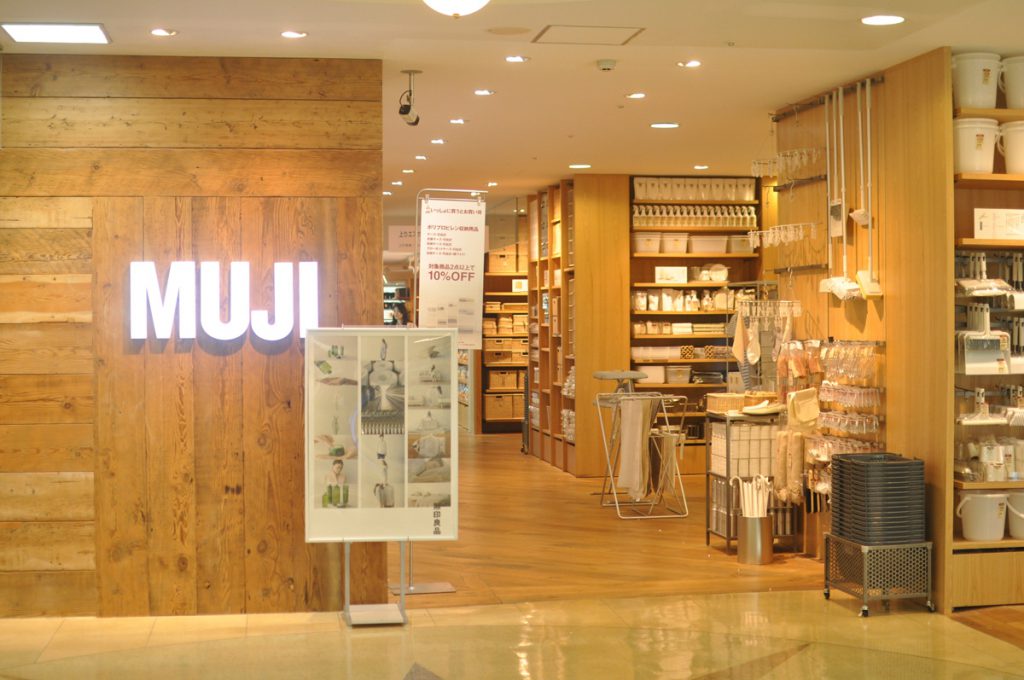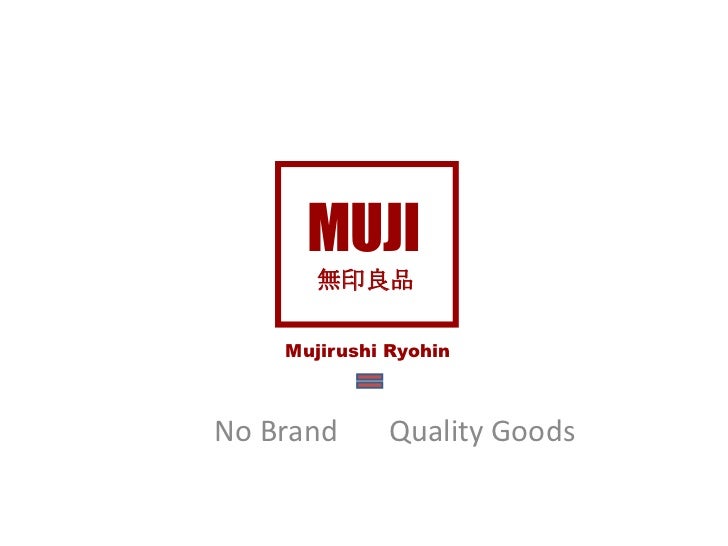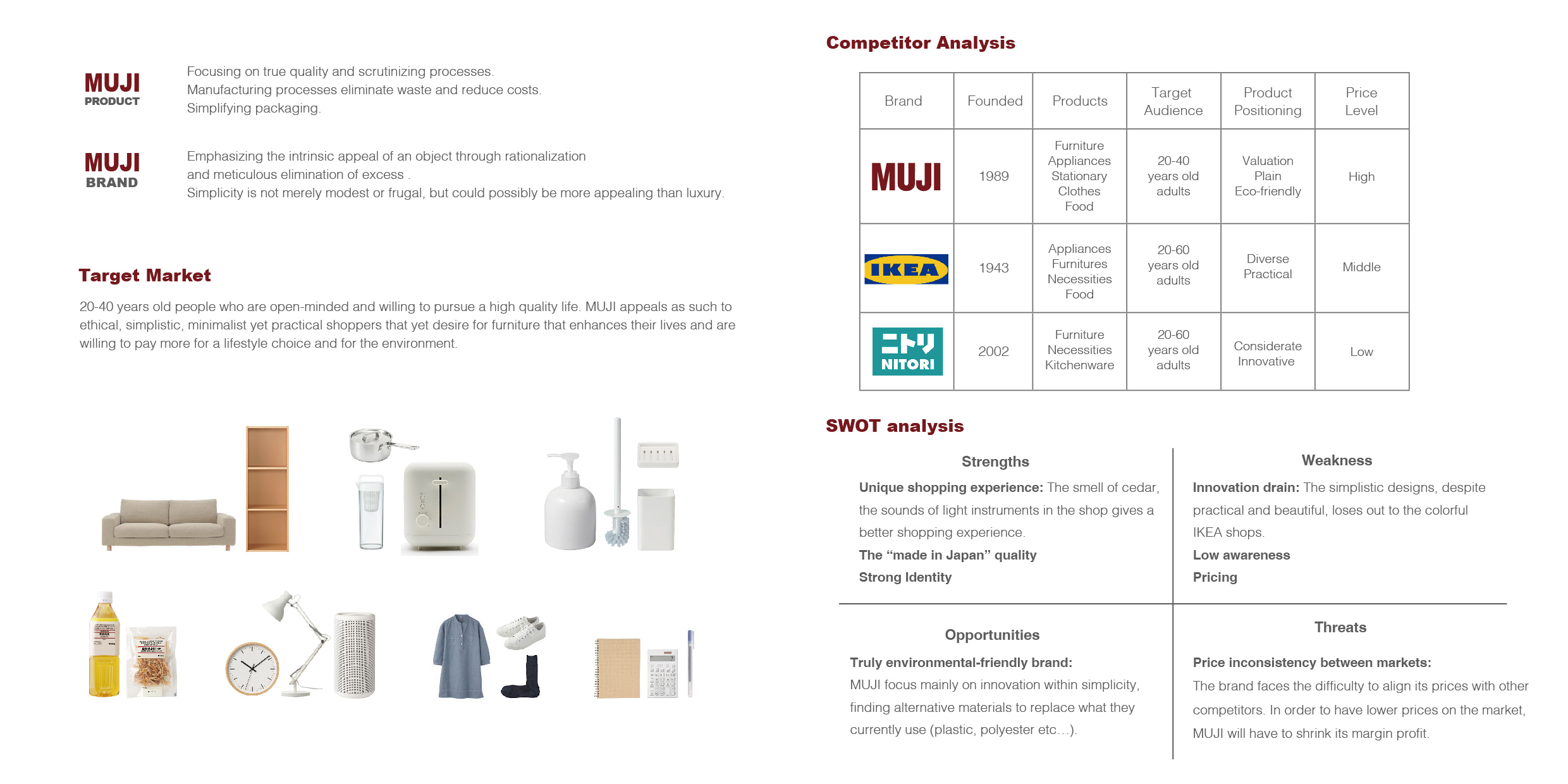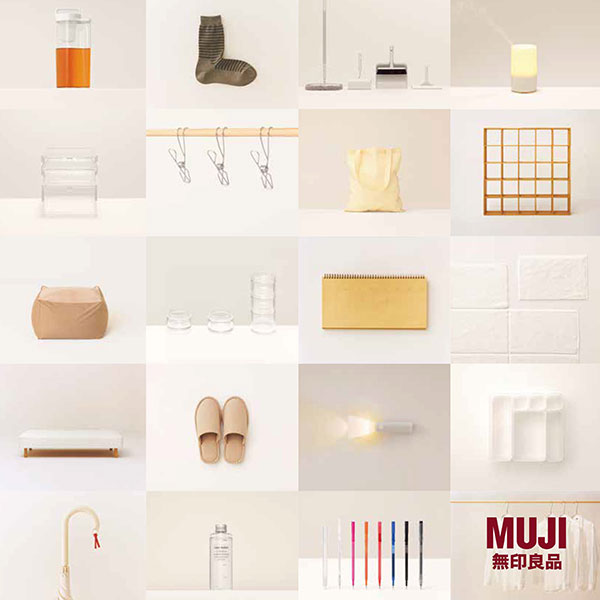
What Leads to Brand Resonance Muji, Muji style, Brand
Throughoutitshistory,theMujichainhassoughttoenablepeopletomakebetterchoices abouttheirqualityoflifeandtheirdaytodaylifestyles.Intheprocess,thecompanyhas givencarefulconsiderationtotheefficientuseofnaturalresourcesandenergy,aswellasto therecyclingandreusabilityfeaturesofitsproductsbasedonan"enlightenedview"of whataredesirablelifestylesforthefutur.

Like Its Design Ethos, Muji's Business Strategy Is Surprisingly Simple
The Japanese outlet MUJI, founded back in 1980 with over 300 stores outside Japan, recently opened its first hotel in Shenzhen, China. The minimalist's perfect dream getaway is located just above a two-story MUJI outlet, reflecting its Upon entering one of the rooms, one will be embraced with all things MUJI.

Conheça a MUJI e os conceitos de nobrand e minimalismo da varejista
North American sales account for 3.5 percent, or about $134 million, of Muji's global sales, which last year came to $3.81 billion, or 409.7 billion yen. "Our total sales in the U.S. increased.

Muji Messe groovisions Muji, Branding design, Web design
4 min read · Feb 6, 2022 While brands are creating a unique image through commercials, a brand with "Brandless" as its main appeal has emerged in the Asian market in the last few years..

MUJI Brand Presentation
While both brands offer affordable products, MUJI emphasizes minimalism and sustainability, while IKEA offers a broader range of styles and designs. This article takes you through the fine details of MUJI as a brand, its brand story and strategy, how it compares to IKEA, and everything you need to know. Keep reading!

02_Brand Consultancy_Luxury Strategy Case Studies Muji 12 Nov Emily
The owner of the Muji brand of stores - Ryohin Keikaku Co., Ltd - has, since gaining its autonomy from the Seiyu department store chain in 1989, been developing and providing daily consumer necessities, such as apparel, household goods, and food items. The company's basic principle is to develop simple and novel products that are reasonably priced by making the best use of available.

Jerry Yao MUJI 2018 branding
The owner of the Muji brand of stores — Ryohin Keikaku Co., Ltd. — has, since gaining its autonomy from the Seiyu department store chain in 1989, been developing and providing daily consumer necessities, such as apparel, household goods, and food items.

MUJI Williamsburg Campaign Graphis
MUJI carries a huge selection of "no-brand quality goods." Over 7,000 SKUs, to be exact. In their stores and online, you can find everything from clothing and household goods to stationary, beauty products, and even food—all with minimal packaging and no logos.

Muji Brand Book by Vania Putri Issuu
The brand standard of "MUJI" leads the new trend of international consumption Jan 2017 Wang Hongyan Wang Hongyan. The brand standard of "MUJI" leads the new trend of international.

Japanese brand MUJI opens first store in Delhi
Muji: The Brand With a No-Brand Strategy Understanding the business model of a truly unique company Kenji Explains · Follow Published in Better Marketing · 4 min read · Nov 20, 2020 -- 8 Muji store in Stockholm, Sweden. Image by Muji The idea of a company not branding itself seems contradictory.

Muji in Russia Macrolevel analysis
Japanese lifestyle retailer Muji's U.S. operations have filed for Chapter 11 bankruptcy with a total debt of $64 million, joining the list of 110 companies (including Brooks Brothers in the same.

Campaign List MUJI
15 July 2019. NEW YORK, United States — The retailer Muji became one of Japan's most recognizable brands by selling simple, practical items that it hopes will last for decades. It turns out, though, that "less is more" has its limits as a business strategy. After a decade of expansion that brought its minimalist emporia of modular shelving.

The History of Muji Brand and Stores How did Muji so
Namely, its expensive store strategy hasn't been able to grow the brand at the rate necessary to turn a profit. Meanwhile, its e-commerce business faltered because it didn't have mass appeal. One of the biggest things dragging Muji's U.S. presence down is its very stores. "Muji doesn't have a massive store footprint," said Jessica.

Muji Logo LogoDix
What is Muji's business strategy? While IKEA and Uniqlo are Muji's closest competitors, the 'no brand' Japanese company has carved a niche positioning for itself. Muji's products are easily recognisable and appeal to many because of its aesthetic design. No fuss at all. Muji's products fit into many homes around the world.

'You can't just export the strategy' How Muji's US expansion faltered
Muji Brand. O ne of the best examples in terms of visual identity in the furniture and household items sector is the Muji brand. An essential reference in Japanese design, which quickly expanded to the rest of the world. Founded in 1979, Muji is often referred to as the "unbranded" company, as its products do not display any allegorical symbol to the institution.

A Branding Success Story Muji — Natalie Ex Graphic Design and
Brand strategy 1.The difference: Creating simple, quality, Japanese-style products without advertising. 2. Brand personality: "Natural, unbranded, simple and close" 3.Brand Model: The Everyman - Ordinary People Some of the brand success factors for Muji include Minimalism in design: Packaging: Design process: Personalized: Digital Leverage: